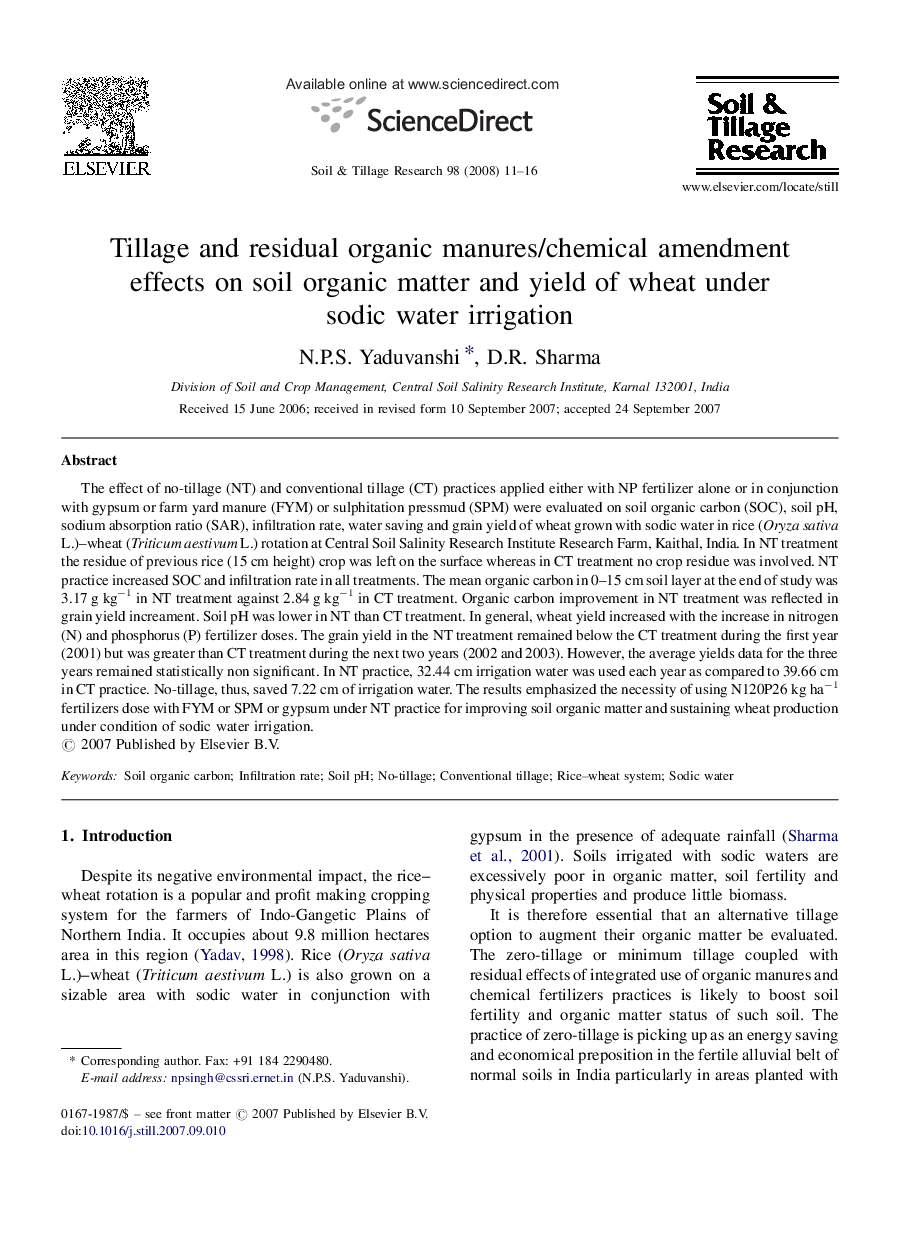| Article ID | Journal | Published Year | Pages | File Type |
|---|---|---|---|---|
| 306706 | Soil and Tillage Research | 2008 | 6 Pages |
The effect of no-tillage (NT) and conventional tillage (CT) practices applied either with NP fertilizer alone or in conjunction with gypsum or farm yard manure (FYM) or sulphitation pressmud (SPM) were evaluated on soil organic carbon (SOC), soil pH, sodium absorption ratio (SAR), infiltration rate, water saving and grain yield of wheat grown with sodic water in rice (Oryza sativa L.)–wheat (Triticum aestivum L.) rotation at Central Soil Salinity Research Institute Research Farm, Kaithal, India. In NT treatment the residue of previous rice (15 cm height) crop was left on the surface whereas in CT treatment no crop residue was involved. NT practice increased SOC and infiltration rate in all treatments. The mean organic carbon in 0–15 cm soil layer at the end of study was 3.17 g kg−1 in NT treatment against 2.84 g kg−1 in CT treatment. Organic carbon improvement in NT treatment was reflected in grain yield increament. Soil pH was lower in NT than CT treatment. In general, wheat yield increased with the increase in nitrogen (N) and phosphorus (P) fertilizer doses. The grain yield in the NT treatment remained below the CT treatment during the first year (2001) but was greater than CT treatment during the next two years (2002 and 2003). However, the average yields data for the three years remained statistically non significant. In NT practice, 32.44 cm irrigation water was used each year as compared to 39.66 cm in CT practice. No-tillage, thus, saved 7.22 cm of irrigation water. The results emphasized the necessity of using N120P26 kg ha−1 fertilizers dose with FYM or SPM or gypsum under NT practice for improving soil organic matter and sustaining wheat production under condition of sodic water irrigation.
